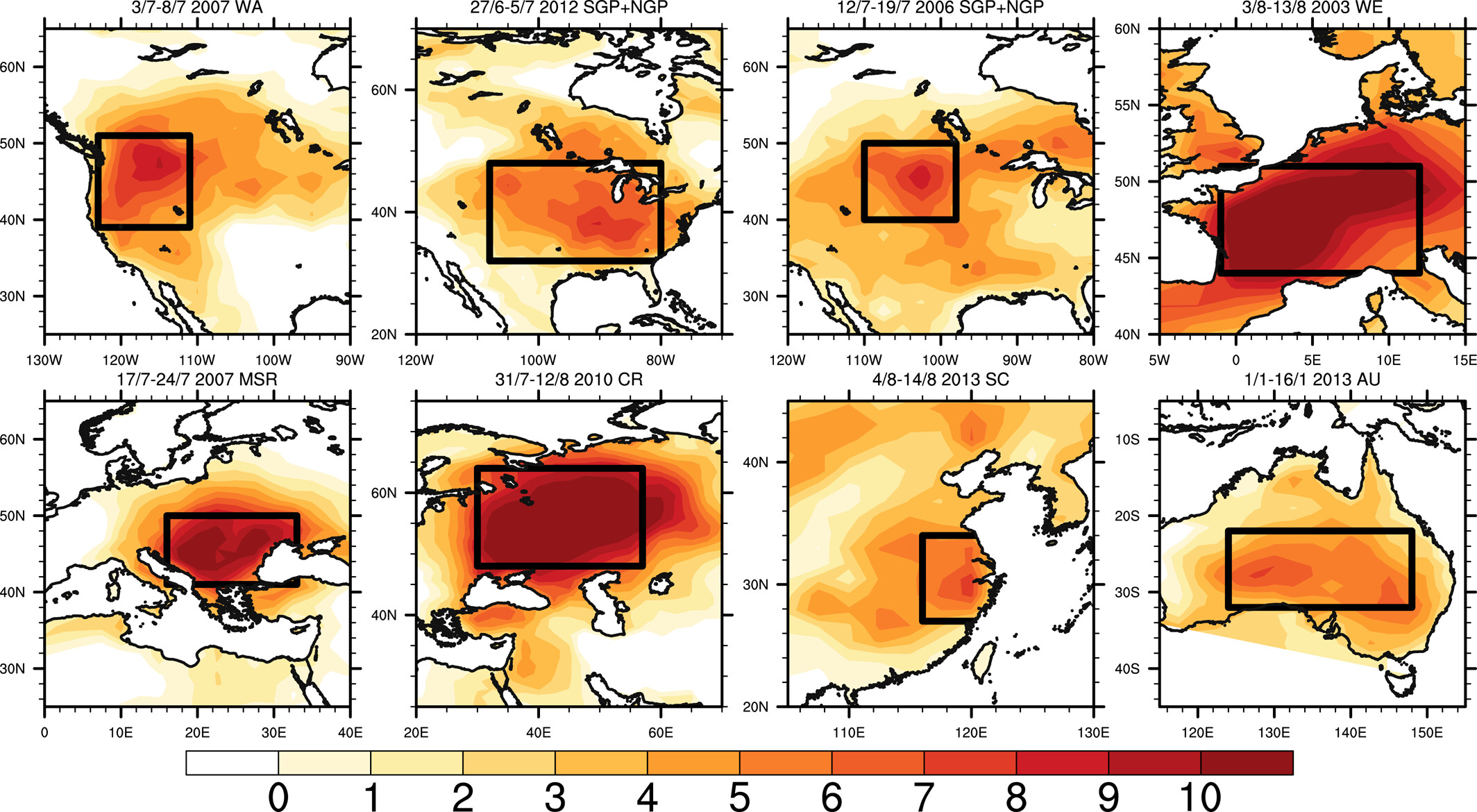[LMD publishes] What future for heatwaves?

Heat waves are extreme climatic events that can have major impacts on society, the economy, human health and agriculture, and many of their characteristics are likely to be modified as a result of climate change.
How realistic are simulated heatwaves in climate models and how will the frequency, duration and intensity of these events evolve in the future?
These questions were the focus of a study by Frédérique Chéruy from LMD, in collaboration with researchers in Grenoble (IGE) and Belgium (VUB).
The models from the phase 6 of the Coupled Model Intercomparison Project (CMIP6) are first assessed against observations and the ERA5 reanalysis regarding their ability to reproduce heat waves over the period 1979-2014. Over the recent period, the dispersion of temporal indices (frequency, duration, number of events) is comparable for simulations and available observation sets, with trends towards over- or under-estimation depending on the regions considered. Nevertheless, many models overestimate the magnitude of heatwaves (mean of maximum daily temperature reached during a heatwave) compared with observations and reanalysis. Soil moisture anomalies explain up to 30% of temperature anomalies, and excessive soil drying is detected during heatwave days. This could have an impact on the response of simulated heat waves to global warming and on the characteristics of future droughts.
The models’ future projections are then analyzed to understand how heatwaves will evolve. Responses depend very much on the model and region considered, but all models predict a serious intensification, which is quantified in terms of frequency, duration, intensity and extension. For instance, a global warming of 3°C above pre-industrial levels, leads to a significant increase of more than four events per year in most regions, or at least 40 heatwave days over more than 80% of the area (compared with less than 10% for the recent period).
https://agupubs.onlinelibrary.wiley.com/doi/full/10.1029/2022EF003301

